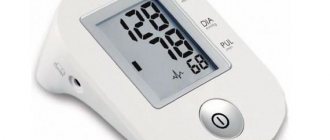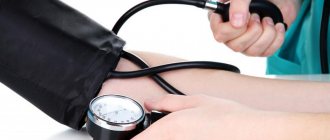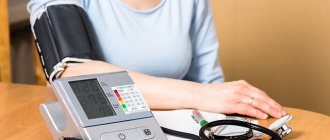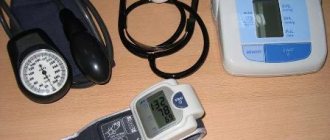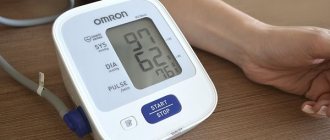Everywhere, a device for measuring length is used in various fields: construction, agriculture, personal improvement, utilities and other industries. All devices, in accordance with the basic principle of operation, are divided into variants of mechanical, optical, and electronic influence, the functionality of which is based on the physical designation of the distance.
Elementary models
Mechanical type models are different readings measured linearly. They are made of metal, fiberglass, have a nylon body, and are available in tape or roulette versions. The instruments are used to directly record the length of the line by sequentially reading the readings of the measuring device in the alignment of the measured object. The final results are obtained after adding up the individual measurements in standard units.
The procedure itself is carried out along the body of the object, or with hanging a measuring device at a low height, fixed in fixation stands. Sometimes, instead of the minimum straight direction, a certain broken line is measured between control points. To obtain an accurate horizontal position, check the angle of inclination of the segment or its individual sections.
In geology and other earth measurements, the most basic device is considered to be a surveying tape, with the help of which lengths are calculated with a relative result (the inaccuracy is about 1:1500).
Digital devices: blood pressure measurement technology
Semi-automatic and automatic devices for measuring blood pressure are easy to use. They note indicators of not only pressure, but also pulse rate, and also show the presence of arrhythmia. When measuring blood pressure using a semi-automatic tonometer, the technique of applying a cuff and pumping air using a bulb is carried out in the same way as when using a mechanical device. After air deflation begins, you need to wait for stable readings on the monitor.
The automatic tonometer itself pumps and releases air, displaying the measurement data on the monitor after the procedure is completed. A “pulse” automatic blood pressure monitor is attached to the wrist so that the hand is relaxed and the wrist itself is located at the level of the heart. The disadvantage of digital tonometers is considered to be errors in their operation associated with frequent use, malfunctions when batteries are discharged, and the high sensitivity of the electronic device system.
For people with frequent fluctuations in blood pressure, especially those with hypertension, it is better to have a tonometer at home to regularly monitor the functioning of the heart and blood vessels. The choice of device is up to the patient himself.
Roulettes
Similar devices for measuring line lengths are quite common, like measuring devices. Domestic roulettes are equipped with scales with nominal sizes from one to one hundred meters. The functional surface is called canvas or tape. This part has a protective coating against rust and corrosion (varnish, enamel, polymer).
Depending on the initial placement of the measuring tape scale, the modification of tape measures is presented in two variations:
- The starting reference point is shifted from the end part by at least 1.5 cm;
- The initial scale reading is identical to the edge of the working surface.
The gradation is applied taking into account millimeters, centimeters, decimeters and meters. There are two groups according to application accuracy: 3rd and 2nd classes.
The average service life of stainless steel tape measures is about two thousand measuring cycles, and that of carbon steel is 1,500 measuring cycles. The full measurement stage means unfolding the web, pulling it to its full length, stretching, counting, and folding the tape. To obtain the most accurate readings, careful control of the layout, position and temperatures, as well as constant tension of the tape, is necessary.
How to measure a person's blood pressure
A person who needs to monitor blood pressure several times a day will find it difficult to constantly contact doctors for this. Therefore, it is best to learn how to use a home pressure measuring device yourself, armed with theoretical advice.
Before measuring, preliminary preparation is recommended:
- It is necessary to measure pressure with the device while in a calm state without moving;
- room temperature should be at least 20 degrees Celsius;
- in order not to artificially inflate the readings, do not consume caffeine-containing products or smoke before taking measurements;
- It is advisable to stop using vasoconstrictor medications or drops 1.5 hours before the procedure;
- It is undesirable to determine the blood pressure level with a full bladder;
- it was noted that the mechanism produces false results in people suffering from frequent constipation;
- When measuring, do not be distracted by conversations or extraneous thoughts.
Having completed the preliminary steps, you can proceed directly to working with the sphygmomanometer.
- Take a comfortable sitting position.
- Place the hand on which the measurements will be taken on the table in a semi-bent position.
- Attach the cuff to the shoulder so that its lower edge is several centimeters above the elbow joint (at the level of the anatomical location of the heart).
- Put on the stethoscope, and press the membrane tightly against the inside of the bend of the arm above the passing vessels.
- Inflate the cuff to 200 or 220 mmHg. pillar You need to focus on your most common indicators.
- Carefully, controlling yourself by the movement of the pressure gauge needle, release the air stream and prepare to hear the pulse beats through the phonendoscope.
- At the first beat, record the digital reading (this is the upper or systolic limit).
- Next, listen to all pulse signals and note the last beat (this is the lower or diastolic limit).
- If you are not sure, repeat the manipulation no earlier than after a few minutes.
Advantages of roulette
A device for measuring length called a tape measure has a number of undeniable advantages. These include:
- Compactness.
- Light weight of the tool.
- The simplicity of the device and its operation with high measurement accuracy, in particular short lines.
The disadvantages include the following:
- Significant labor intensity when measuring certain quantities.
- Clearing of the working area is required, especially when measuring the angles of inclination of individual line segments.
The most durable are polyamide tapes or products made from stainless steel. The first option is transparent plastic, which effectively protects the instrument from moisture and friction. With such canvases, tape measures do not rust, and the markings on them are not erased.
Algorithm of actions when measuring blood pressure with a mechanical tonometer
The patient must empty the bladder, do not eat, do not smoke, do not take tonic or stimulant drinks before the procedure, and must sit quietly for 5 - 7 minutes. After a little adaptation, they begin directly measuring blood pressure. A cuff is placed on the middle of the patient’s shoulder so that it is located 3–4 cm above the elbow; The air supply tubes are placed on the front surface of the shoulder in the middle, above the elbow. The pressure gauge is placed at the level of the heart, attaching it to the cuff.
The stethoscope is placed with the head on the patient's antecubital fossa. Close the air valve and use a bulb to pump air into the pneumatic chamber of the cuff. In this case, the numbers on the pressure gauge scale should be higher than the expected values. Smoothly open the valve and gradually bleed air from the cuff, listening to the sounds in the stethoscope. Notice the appearance of pulsating tones and their disappearance by looking at the tonometer scale. Scale division marked with arrow:
After the sounds have died down, the valve is opened and the air is completely released, pumping it out of the pneumatic chamber. After this, the cuff is removed from the patient's shoulder. If it is necessary to measure blood pressure on the thigh, take a larger cuff than the standard one and attach it above the knee joint. Rubber tubes are placed above the knee bend, and the stethoscope is applied to the popliteal fossa. The rest of the technique is the same. It should be noted that when measuring blood pressure on the thigh, the readings will be 10–15 mmHg higher than they would be under the same conditions on the brachial artery.
Optical rangefinder
When working in difficult areas and in hard-to-reach places, rangefinders are often the only effective device for measuring distances. These devices are divided into optical and electronic models.
In the first case, the device for measuring length is a device that operates on a parallactic (alternating) principle.
One value (X or Y) is taken as a constant indicator, the other as a changing one. Depending on various factors, optical rangefinders are divided into models with a variable X base and a constant Y angle, or vice versa.
The design of these devices is made in the form of an attachment to the telescope, as an independent device, a built-in element, or as an additional part. An optical rangefinder with a filament base and a stable angle is quite popular.
Energy
Energy is measured using an energy meter. Examples of energy meters include:
- Electric energy meter.
An electricity meter measures energy directly in kilowatt-hours.
- Gas meter
A gas meter measures energy indirectly by recording the volume of gas used. This can be converted into a measure of energy by multiplying it by the heating value of the gas.
Finished works on a similar topic
Technical measurements and instruments Test work, Metrology checked for uniqueness by expert Alexander Zhilin 200 P. 9 pages
Methods and measuring instruments Course work, Metrology tested for uniqueness by expert Ilya Vyacheslavovich Pokrovsky 500 P. 20 pages
Information and measuring systems Test work, Informatics checked for uniqueness by expert Natalya 500 P. 20 pages
Scanning equipment Abstract, Commodity research checked for uniqueness by an expert 200 P. 14 pages
Measuring Instruments Abstract, Computer Science checked for uniqueness by an expert 300 P. 9 pages
Measuring scales Test work, Psychology tested for uniqueness by expert Daria Larionova 250 P. 6 pages
control and measuring instruments Test work, Electronics, electrical engineering, radio engineering checked for uniqueness expert 300 P. 12 pages
Methods and means of measurement and control Course work, Architecture and construction checked for uniqueness by an expert 900 P. 29 pages
Types of measuring instruments. Measurement methods Abstract, Metrology checked for uniqueness by an expert 300 P. 16 pages
Receive completed work or specialist advice on your educational project Find out the cost
Optical device characteristics
The device in question for measuring length with a constant parallax angle is one of the simplest measuring instruments. Most spotting scopes, theodolites and levels are equipped with it. The device consists of a glass plate with a pair of horizontal threads applied at a certain distance. The plate is placed in the ocular space of the telescope of a surveyor or other measuring instrument.
Using the device in operation, the count is taken along the outermost threads of the vertical bar grid, and then the distance is calculated using a special formula, where:
- L—reported difference by rail;
- C – stable rangefinder value;
- K is a coefficient that is equal to one hundred units.
The accuracy of measurement with a thread rangefinder is often affected by an erroneous reading on the staff; the error is 1/300 - 1/400.
What to look for when buying a device
It is impossible to say unequivocally which device is better to measure pressure, because different types of tonometers have their own disadvantages and advantages. It is best to make a purchase at a pharmacy or a Medtekhnika specialized store, where the buyer will be told about the design features of a particular model and sold a certified product.
If the main thing for the consumer is the accuracy of the device, you should purchase a mercury tonometer. Of course, it is dangerous due to mercury spills if it is damaged. To prevent this risk, modern analogues have protective gaskets and mercury fuses. This makes the device safer, but increases the price: a good copy will not be cheap.
If you need accuracy and affordability, you can buy an aneroid mechanical meter. When choosing it, you should pay attention to the quality of the cuff and pear: latex ones with metal parts will last longer.
If ease of use is your top priority, you should purchase an automatic device. When choosing it, consider the following:
- who will use it and how often;
- the nature of existing diseases;
- functionality;
- method of powering the device: battery-powered or mains-powered;
- the size of the cuff and the presence of a bracket on it, which allows you to independently secure the cuff to your arm;
- accuracy class (the mark “Clinically validation” means the highest class);
- price.
Price is not the most important criterion, but sometimes you might think: is it worth paying almost 2 times more for an automatic tonometer, if using a semi-automatic tonometer you can get the same result only by pumping air with a pear.
Very precise electronic devices are produced by Omron, Citizen, AND, Rossmax (Japan), Microlife (Switzerland). Accurate diagnosis of blood pressure is a way to prevent serious consequences and guarantee good health.
The desire to live a long life in excellent healthy shape requires taking care of your well-being. To do this, you need to have a pressure measuring device in your home, which is called a tonometer. The opinion that it is needed only by people who suffer from high or low blood pressure is erroneous. Hypertension is considered a “silent killer” because it lasts for years without causing discomfort. Then, overnight, a stroke or cardiac ischemia or heart attack rapidly develops.
The most popular 10 length measuring instruments
Commonly used mechanical and optical length measuring devices include the following:
- Roulettes with a cloth made of braid and metal.
- Laser or optical rangefinders.
- Altimeters.
- Levels of different types.
- Theodolites.
- Total stations.
- Compassos.
- Electronic complexes.
- Ground scanners.
- Digital cameras with rangefinder function.
For example, a device for measuring cable length can be either a mechanical type (elementary meter-by-meter calculation by unwinding and measuring certain sections) or an electronic version. The latest model allows you to calculate the length of the cable in a coil, based on the parameters of the material cross-section, its weight and material of manufacture, without unwinding the coil.
Electronic blood pressure monitors
This is a relative innovation: they were invented in the middle of the last century. There are 2 types:
- automatic, where all processes are controlled electronically;
- semi-automatic, when air is pumped into the cuff by a bulb, everything else is done automatically.
Electronic devices for measuring blood pressure come in two types: wrist, when the cuff is placed on the wrist (suitable for younger and healthier people, overweight people and those who carry the meter with them), and shoulder, where the cuff wraps around the upper arm.
This measurement method is recommended for patients with cardiovascular diseases, because it's more accurate. How accurately these devices measure pressure is a question that interests everyone. It is sometimes suggested that electronic blood pressure measuring devices are not always accurate. Of course, the most accurate measurements are made by a mechanical device. In order for an automatic tonometer to show true pressure, it is necessary to adhere to certain rules during measurement:
- Before starting the measurement, you should take a comfortable position, relax, and sit quietly for 5 minutes.
- Position your hand so that your forearm is at the level of your heart and secure the cuff to your arm.
- By pressing the “Start” button, the subject must freeze until the device ends. Inflating and deflating air, listening to pulsation, displaying measurement readings on the screen - the electronic mechanism will do all this itself.
- You should not measure blood pressure immediately after physical activity, smoking, or eating.
- It is better to take measurements twice, taking the arithmetic average as a basis.
An automatic tonometer has a number of positive qualities:
- it is more convenient to use;
- does not require special training;
- measures pulse;
- has a memory that allows you to see how the pressure changed during the day.
An automatic device may have a number of other useful features, for example, determining arrhythmia or monitoring the quality of measurement. If a person has poor vision, there are devices that can read the measurement results. There are special models for children, pregnant women and athletes.
For those diagnosed with tachycardia, a medical diagnostic device has been created that takes 3 measurements one after the other, and the result is the average value.
Peculiarities
A device for measuring the wavelength of light consists of a guide ruler, a light source, a diaphragm, a pair of holes for filament probes, grating blocks and a reiter. The device captures the measured value by analyzing the developing light beam in the slits of the working eyepiece, taking into account the speed of its appearance and disappearance.
Depending on the name of the length measuring devices, you can find out their principle of operation, the preferred scope of application and the accuracy of the final readings.
Accuracy of instrument readings
New devices for measuring pressure have a factory verification, which guarantees the reliability of their readings, with a mandatory mark in the device passport. However, the period of metrological verification is limited. In medical institutions, all tonometers must be verified annually by the metrological service. It is also advisable to have home appliances checked by a specialized service to ensure the reliability of the device and the accuracy of the readings it gives.
Blood pressure (BP) numbers are the most important indicator of the state of the cardiovascular system.
Indicators are individual for each person; they tend to change during the day under the influence of a variety of factors - stress, physical activity, weather dependence, consumption of certain foods and other factors.
Exceeding the normal level of blood pressure may be a prerequisite for any disease.
How can a hypertensive patient use a blood pressure monitor?
Constant control of blood pressure (BP) is the key to a healthy life. How to use a tonometer correctly and perform diagnostics correctly?
To avoid health problems, you need to constantly monitor your blood pressure (BP). Today, doctors diagnose high blood pressure in every third patient, surprising the person. Many claim that they have never felt the symptoms of hypertension and are hearing about high numbers for the first time.
Meanwhile, in the annual reports of doctors, they say that a large percentage of patient mortality occurs due to stroke and heart attack, which occur against the background of high blood pressure.
Arterial hypotension (low blood pressure) is less common. In most cases, low blood pressure is caused by various chronic diseases.
What is the name of the device that measures pressure?
This is a question many people ask after a slight illness and the first symptoms of increased blood pressure. This device is called a tonometer.
Modern medicine has a large arsenal of devices for measuring blood pressure. But with such a large selection, they are divided into only two groups: oscillometric and auscultatory.
With the ascultative method of measurement, a mechanical pressure gauge and a phonendoscope with a bulb are used. And with the oscillometric method of measuring pressure, electronic and digital instruments are used.
To determine blood pressure at home, mechanical, semi-automatic and automatic tonometers are used. When using mechanical tonometers, the noise that occurs when blood moves through the arteries is assessed. And when measuring pressure, automatic devices record the fluctuations that the arterial wall creates.
There are two types of automatic blood pressure monitors: shoulder and wrist. The principle of operation is the same, the only difference is in the correct placement on the desired part of the body.

